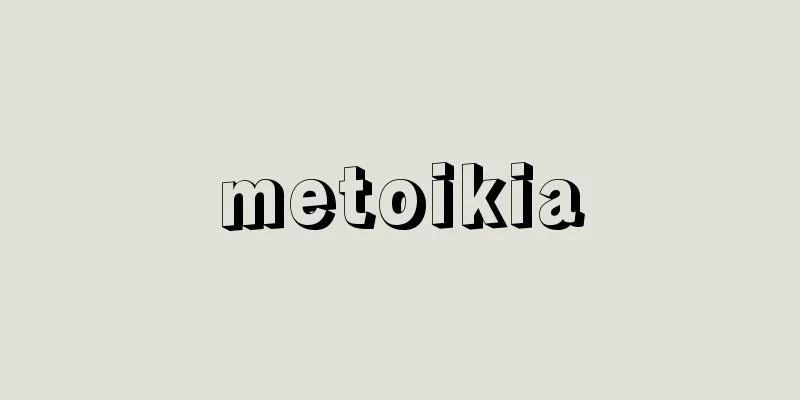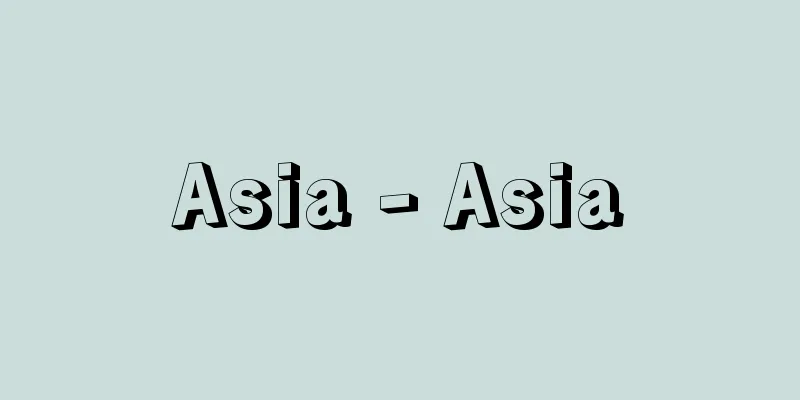Compound - compound

|
A substance is a compound formed by the combination of atoms of two or more elements. The various objects that we see around us are called substances, but scientifically speaking, the term substance generally refers to pure substances. [Nakahara Katsunori] Pure substancesA pure substance is one that has a constant chemical composition regardless of its production method or location, and that has the same properties no matter which part of it you look at, i.e., it is homogeneous. Examples of pure substances are simple substances and compounds. Simple substances are those that consist of only one type of element and cannot be separated into two or more substances by chemical means, such as sulfur, diamond (carbon crystal), or mercury. Compounds include sodium chloride (table salt without impurities), pure sugar, monosodium glutamate (a flavor enhancer), and pure water. For example, water is a compound of oxygen and hydrogen, and its composition is fixed wherever it is, and all parts of it have the same properties, yet it is completely different from hydrogen and oxygen. [Nakahara Katsunori] MixtureA mixture is a mixture of two or more pure substances, such as elements or compounds. A mixture is one in which the components are not constant, can be changed at will, and can be separated into two or more types by physical means. There are two types of mixtures: homogeneous and inhomogeneous. Examples of homogeneous mixtures are air (a mixture of nitrogen, oxygen, carbon dioxide, water vapor, and other gases), seawater (a solution of sodium chloride and other salts dissolved in water), gasoline (a mixture of various hydrocarbons), and solid solutions such as alloys of gold and copper. Although these are homogeneous like compounds, their composition is not constant (for example, the amount of sodium chloride in seawater varies from place to place, and the amount increases when heated and concentrated), and they can be separated by physical means (for example, the components can be separated by fractional distillation, such as cooling air to make it liquid). Examples of heterogeneous mixtures include many objects, wood, paper, and rocks, whose properties differ depending on the part. To sum up, the objects around us are basically made up of pure substances, that is, elements and compounds, but there are cases where they exist as they are, cases where they are mixed together to form a homogeneous mixture, and cases where they are heterogeneously assembled. Among the adducts and molecular compounds, dimer molecules (such as (CH 3 COOH) 2 ) and salt adducts (such as CaCl 2 ·4CH 3 OH) that somewhat fall outside the above definition are also called compounds. Furthermore, non-stoichiometric compounds that do not follow the law of definite proportions (have an inconstant composition), such as bertholide compounds, clathrate compounds (inclusion compounds), and interstitial compounds, are also called compounds. [Nakahara Katsunori] "Inorganic Chemistry" by Shigeo Kida (1993, Shokabo) " ▽ "The Science Visual 4: Substance" by Christopher Cooper, translated by Mari Hayakawa (1993, Tokyo Shoseki)" ▽ "The Science Visual 7: Chemistry" by Ann Newmark, translated by Koichi Kamogawa (1993, Tokyo Shoseki)" ▽ "Chemistry Data Book 1: Inorganic and Analytical Edition" edited by Akira Yamazaki (2003, Asakura Shoten)" [References] | | | | | | | solutions| | | | | | | | |molecular compounds|Source: Shogakukan Encyclopedia Nipponica About Encyclopedia Nipponica Information | Legend |
|
2種以上の元素の原子が化合することによって生じた物質をいう。われわれの周囲にみられる種々の物体を形づくっているものを物質といっているが、科学的に物質というときは、一般に純粋物質を意味する。 [中原勝儼] 純粋物質純粋物質とは、その製法、所在などのいかんにかかわらず、つねに一定の化学的組成を有し、またどの部分をとってみても性質が同じ、すなわち均一なものをいい、単体と化合物がそれにあたる。単体とは1種類の元素だけからなるもので、化学的な手段で二つ以上の物質に分けることができないものをいい、たとえば硫黄(いおう)やダイヤモンド(炭素の結晶)、あるいは水銀などがそうである。また化合物には、たとえば塩化ナトリウム(不純物の入っていない食塩)、純粋な砂糖、あるいはグルタミン酸ナトリウム(うま味調味料の一つ)や、純粋の水などがそうである。すなわち水を例にとれば、水は酸素と水素との化合物で、どこにあってもその組成は決まっており、どの部分も同じ性質で、しかも水素や酸素とはまったく違っている。 [中原勝儼] 混合物単体や化合物など、純粋物質が2種類以上ただ単に混合したものを混合物といっている。したがって混合物は、その成分が一定ではなく、任意に変えることができるうえ、物理的な手段で2種類以上に分離することができるもので、見かけは均一なものと不均一なものとがある。全体が一様に同じ、すなわち均一な混合物としては、空気(窒素、酸素、二酸化炭素、水蒸気その他の混合気体)とか、海水(塩化ナトリウムその他の塩類が水に溶けた溶液)やガソリン(各種炭化水素が混合している)、あるいは金と銅との合金などのような固溶体などがその例である。これらは化合物と同じように均一であるが、その組成は一定せず(たとえば海水中の塩化ナトリウムの量は場所によって違うし、加熱濃縮すればその量は多くなる)、また物理的な手段によって分離できる(たとえば空気を冷却して液体とするなどして分留すれば、それぞれの成分に分離することができる)。また不均一なものとしては、部分によって性質が違う多くの物体、材木、紙、岩石などがある。 以上のことをまとめていうと、われわれの周りの物体は、基本的には、純粋物質、すなわち単体および化合物からできているが、それがそのままで存在している場合と、それらが混じりあって混合物として均一になっているもの、およびそれらが不均一に集まっている場合とがある、ということができる。 付加化合物や分子化合物のようなもののうち、上記の定義からいくぶん外れるような二量体分子(たとえば(CH3COOH)2など)や塩類の付加化合物(たとえばCaCl2・4CH3OHなど)も化合物といっている。またさらに、定比例の法則が成立しない(組成の一定でない)、非化学量論的化合物であるベルトライド化合物、クラスレイト化合物(包接化合物)、侵入型化合物なども化合物といっている。 [中原勝儼] 『木田茂夫著『無機化学』(1993・裳華房)』▽『クリストファー・クーパー著、早川真理訳『ザ・サイエンス・ヴィジュアル4 物質』(1993・東京書籍)』▽『アン・ニューマーク著、鴨川幸市訳『ザ・サイエンス・ヴィジュアル7 化学』(1993・東京書籍)』▽『山崎昶編『化学データブック1 無機・分析編』(2003・朝倉書店)』 [参照項目] | | | | | | | | | | | | | | | | | | |出典 小学館 日本大百科全書(ニッポニカ)日本大百科全書(ニッポニカ)について 情報 | 凡例 |
<<: Compound nomenclature - Chemical compound nomenclature
>>: Pyrotechnics - pyrotechnics
Recommend
De Roburt, H.
… [Politics, Economy] The parliament is unicamera...
oilphilic radical
...A group of atoms in a molecule that hates wate...
al-Lādhiqiya (English spelling)
...A city on the Mediterranean coast in western S...
Traffic orphans
〘 noun 〙 A child who has lost one or both parents ...
Azemshilo
Also known as Mizokakushi. A perennial plant of th...
Yasui Tetsu - Yasui Tetsu
Educator. Born in Akebono-cho, Komagome, Tokyo (p...
Phase Modulation - Phase Modulation
A modulation method in telecommunications, which ...
ISOS
...The group was comprised mainly of American mar...
Pitoëff, G.
…French actor. Her husband, Georges Pitoëff (1884...
Hebitonbo (Hebitonbo) - Hebitonbo (English spelling) dobsonfly
A general term for insects belonging to the family...
Grey thrush
A bird of the Turdus subfamily, family Muscicapid...
The Aleppo Codex
The Aleppo Codex is a copy of the Hebrew Bible bel...
Concentration Elimination Law - Concentration Elimination Law
〘Noun〙 Abbreviation for "Kado Keizai Ryoku Sh...
Alisiia
…The ancient name was Alesia. There have been var...
Mahavira - Mahavira (English spelling)
Date of birth and death unknown. Founder of Jaini...









